Primula stemless: species and agricultural technology
Primula is an early primrose spring plant that belongs to the primrose family. You can meet such a plant on almost all continents of the planet. Primrose blooms one of the very first, but if you choose the right varieties that have a different flowering period, then you can enjoy beautiful flowering until mid-summer. Many varieties are native to different continents. Many primroses were born in Southeast Asia, while others grow in Tibet, China and the Himalayan mountains. And a small number of species are found in Europe.
Content:
- Primrose types
- Caring for stemless primrose
- Reproduction of stemless primrose
- Application of stemless primrose
Primrose types
Primrose species in nature occurs about 600, and for home and cultural planting, breeders have bred about 50 different varieties and species.
Primula stemless. The homeland of this species is the mountains of the Crimea and the Caucasus. This is a plant for open ground, but more recently, stemless primrose began to be grown at home.
This type of primrose grows in a small bush, belongs to the cushion type.
Features of the plant:
- The leaves are oval and slightly elongated.
- The color of the leaves is green with bright veins, located on short petioles.
- The flowers are large, have a different color: white, yellow, maroon, lilac.
- They are located on short peduncles of 5-7 pieces in the center of the outlet.
- Flowering begins in April and lasts almost 2 months.
Caring for stemless primrose
Despite the fact that primroses are home to different countries, the care of all species is very similar.
The plant feels great in light areas and in partial shade. But it is bad for direct sunlight, the leaves dry up, and the flowers wither. Therefore, it is preferable to plant flowers in a shaded place. For healthy bush growth fertile soil is neededwell loosened. Also, primrose does not like waterlogging and stagnant water. In such conditions, the plant grows underneath and can rot.
But it must be watered regularly and abundantly, especially during the hot season.
Also primroses need regular feeding during the flowering period:
- For this, a weak solution of mineral fertilizer is perfect, which must be applied under the bush twice a week.
- When flowering ends, the feeding process stops.
Since primroses are grown not only in the open field, but also at home, it is necessary to monitor the humidity of the air around the flower pot, and moisturize if necessary.
Reproduction of stemless primrose
Primroses are perennials, but require practically annual transplant... If you neglect this process for 2 years, then the plant will disappear. For early flowering plants, a good time to transplant is late summer or early fall.
Primrose can be propagated in two ways: by dividing the bush and by seeds.
The easiest way is to divide the bush:
- It is necessary to carefully dig out the bush and divide it into small parts, separating the young rosettes with roots from the mother bush.
- They must be planted immediately, it is possible in the vicinity of the place where the main bush grows.
- If transplanted in the fall, then the young bushes will not have time to take root well and may not survive the winter.
The planting period is the end of winter or early spring:
- The seeds of primrose are very small, so when planting, you should not deepen them.
- Seeds can be sown superficially, for example, on the last snow or in moist soil, which is in specially prepared containers.
- Many gardeners recommend placing the container of seeds in the refrigerator for several days, and then placing them in a warm room out of direct sunlight.
When shoots appear it is necessary to place the container in a bag, having previously launched a large amount of air into it. Such a greenhouse is exposed to the sun. Watering the seedlings is very careful, this procedure can be carried out using a syringe and a needle, running water through the needle into the soil. After a while, the plants will grow a little and they need to be distributed in separate containers.
When 5-6 leaves appear on a young primrose, it should be transplanted to strengthen the root, and in August the plant can be planted in a permanent place.
After the spring bloom, primroses can bloom in the fall, this will greatly weaken the bush and can lead to its death. Therefore, in the fall, when buds appear, they must be removed.
Application of stemless primrose
Even in ancient Greece, primroses were considered medicinal plants and were used in folk medicine. Nowadays, such properties are attributed to only one species - medicinal primrose.
Due to their bright color and dense foliage, primroses are often used in garden compositions.
They are planted densely so that the foliage completely covers the soil. Such flowers are suitable for any summer cottage, and will delight with their flowering every spring.
More information can be found in the video.



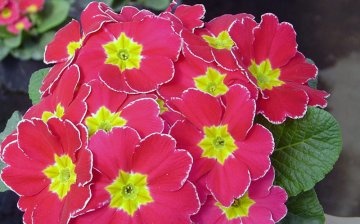


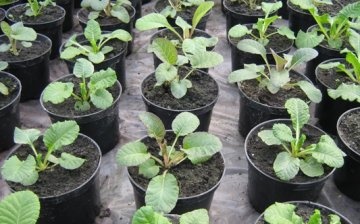
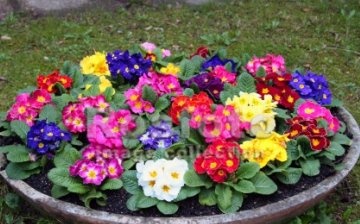





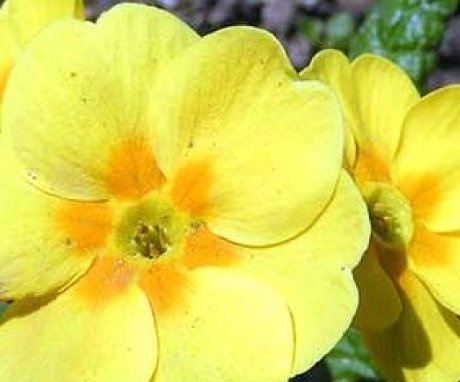
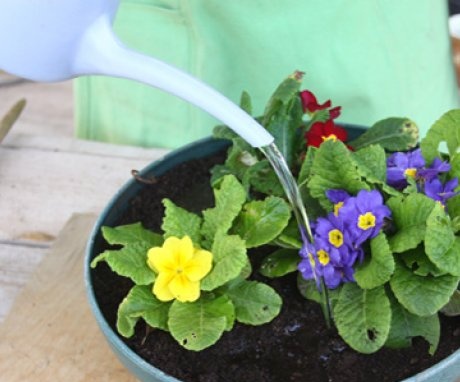
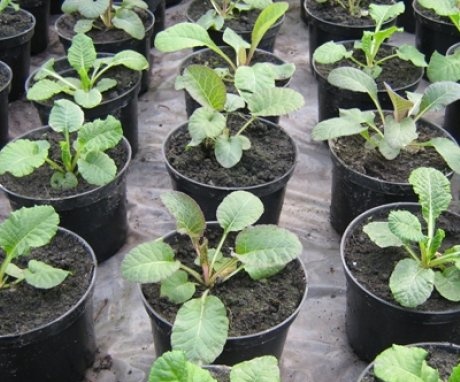

Primrose stemless, like all other species of primroses (except for primrose auricular) loves shaded areas, this feature is associated with its natural range. New-fashioned varieties have very large flowers and bright colors of a wide palette. I got this primrose from seeds, but it is very capricious, requires shelter, because it is unstable to frosty winters ...